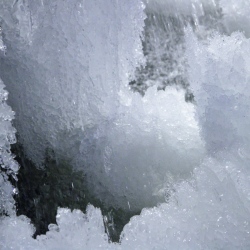
China has for the first time extracted gas from an ice-like substance under the South China Sea considered key to future global energy supply. Chinese authorities have described the success as a major breakthrough. Methane hydrates, also called "flammable ice", hold vast reserves of natural gas.
Many countries including the US and Japan are working on how to tap those reserves, but mining and extracting are extremely difficult.
What is ‘flammable ice’? The catchy phrase describes a frozen mixture of water and gas. "It looks like ice crystals but if you zoom in to a molecular level, you see that the methane molecules are caged in by the water molecules," Associate Professor Praveen Linga from the Department of Chemical and Biomolecular Engineering at the National University of Singapore told the BBC.
Officially known as methane clathrates or hydrates, they are formed at very low temperatures and under high pressure. They can be found in sediments under the ocean floor as well as underneath permafrost on land.
Despite the low temperature, these hydrates are flammable. If you hold a lighter to them, the gas encapsulated in the ice will catch fire. Hence, they are also known as "fire ice" or "flammable ice".
By lowering the pressure or raising the temperature, the hydrates break down into water and methane – a lot of methane. One cubic metre of the compound releases about 160 cubic metres of gas, making it a highly energy-intensive fuel.
